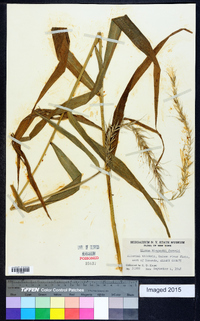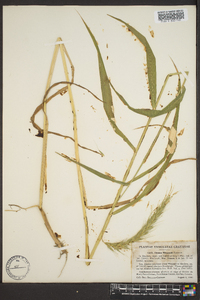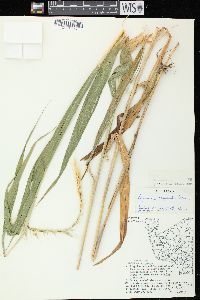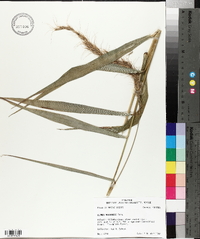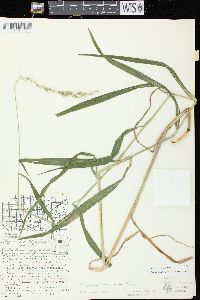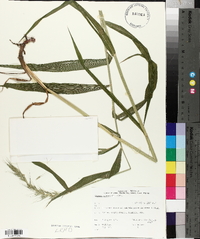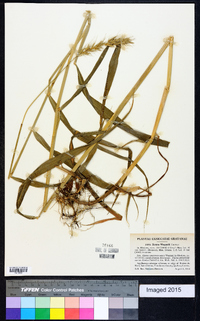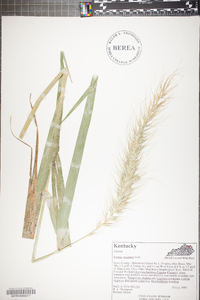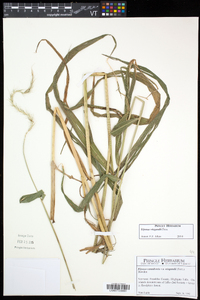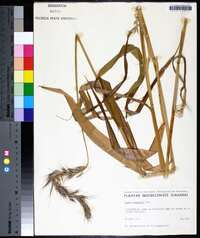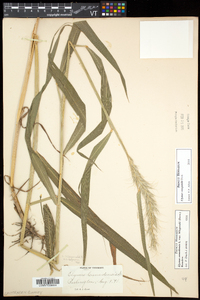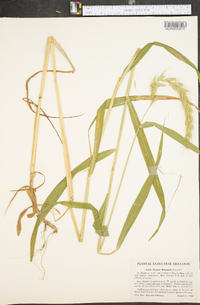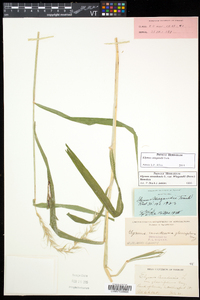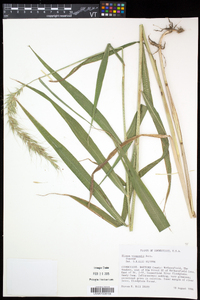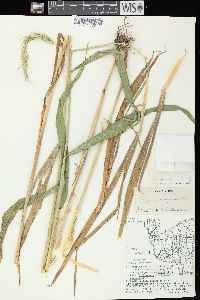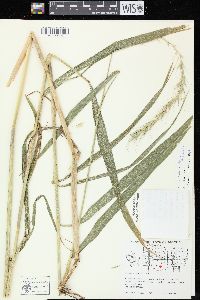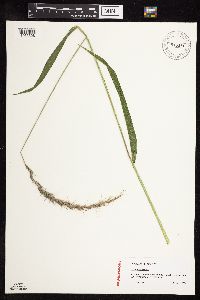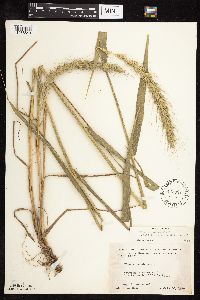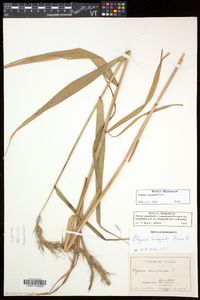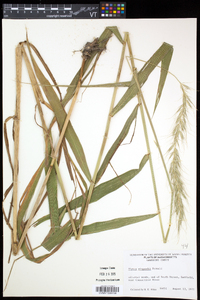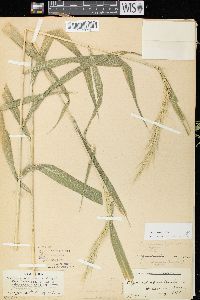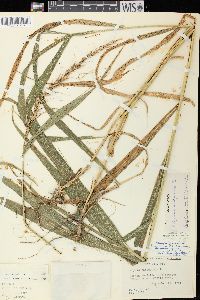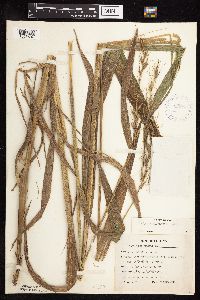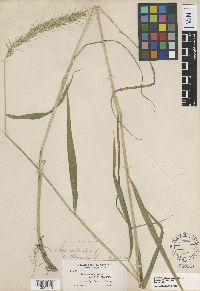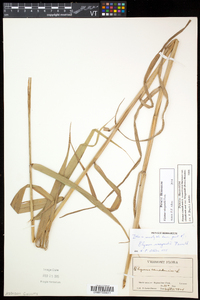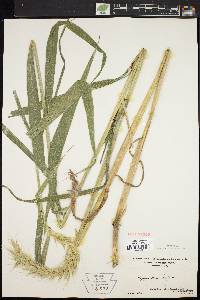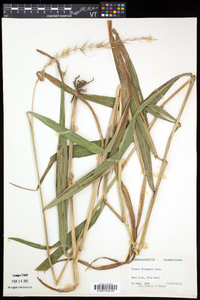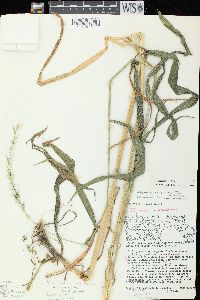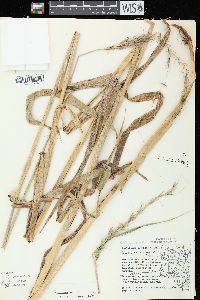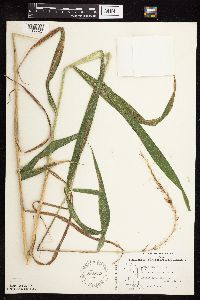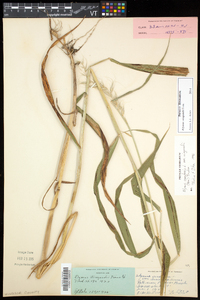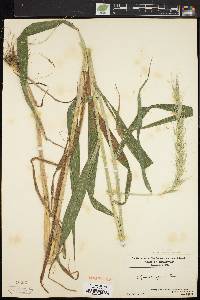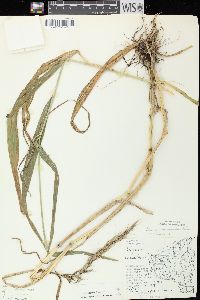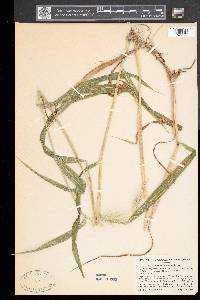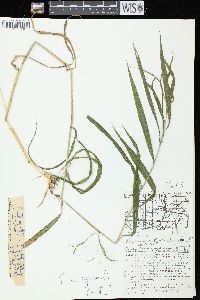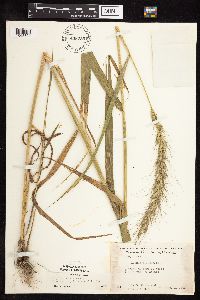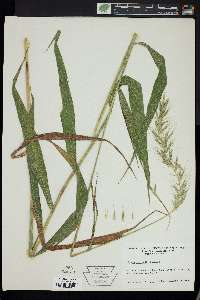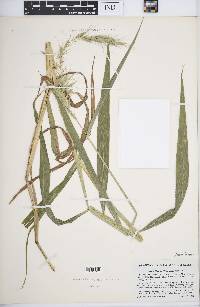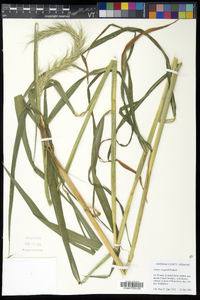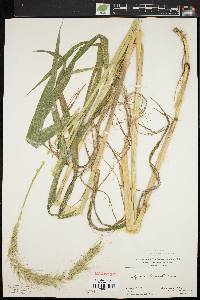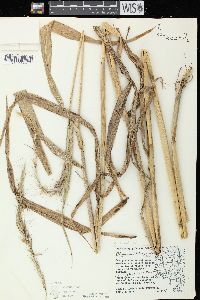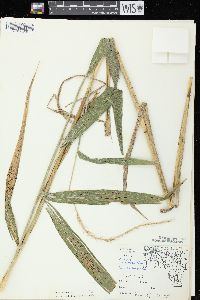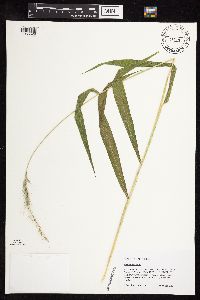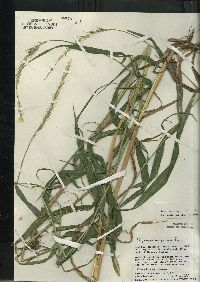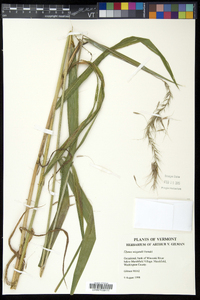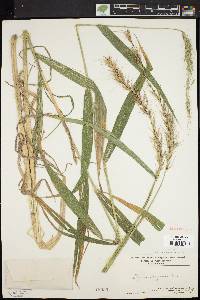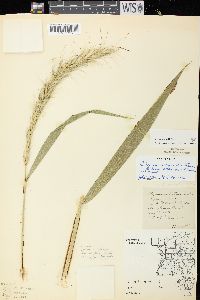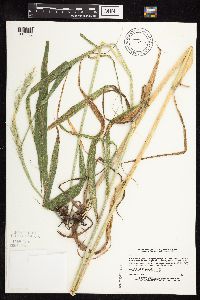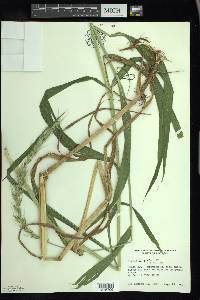Elymus wiegandii
|
|
|
|
Family: Poaceae
Wiegand's Wild Rye, more..., Northern Riverbank Wildrye
[Elymus canadensis f. wiegandii (Fernald) Scoggan, moreElymus wiegandii f. calvescens Fernald] |
Plants cespitose, not rhizomatous, somewhat glaucous. Culms 100-180(220) cm, erect; nodes 9-16, mostly concealed by the leaf sheaths, glabrous. Leaves evenly distributed; sheaths usually glabrous, occasionally villous, often reddish brown; auricles 1-3 mm, brown; ligules to 1 mm; blades (8)10-20(24) mm wide, flat, lax, dark green, adaxial surfaces usually thinly pilose, with weak spreading hairs on the veins at least near the margins, sometimes villous or glabrous. Spikes 10-30 cm long, 3-5 cm wide, pendent, the bases often barely exserted, with 2 spikelets per node; internodes 5-8(12) mm long, 0.2-0.3 mm thick at the thinnest sections, usually pubescent beneath the spikelets. Spikelets 12-20 mm, divergent, with (3)4-6(7) florets, lowest florets functional; disarticulation above the glumes and beneath each floret. Glumes equal or subequal, 12-30 mm including the often undifferentiated awns, the basal 0.5-1 mm subterete and slightly indurate, glume bodies 7-12 mm long, (0.2)0.4-0.9(1.1) mm wide, linear-setiform, entire, widening or parallel-sided above the base, 1-3(5)-veined, glabrous, hispidulous or villous, especially near the margins, margins firm, awns (5)8-15(18) mm, straight or flexuous; lemmas 10-15 mm, usually uniformly appressed-villous, rarely scabrous-hirtellous or glabrous, awns 15-25(30) mm, moderately to strongly outcurving; paleas 9-14 mm, narrowly truncate, minutely bidentate; anthers 2-3.5 mm. Anthesis from mid-July to early August. 2n = 28. Elymus wiegandii grows in moist or damp, rich, alluvial soil, especially on sandy river terraces and in woods and thickets, primarily from Saskatchewan through much of the Great Lakes region to Nova Scotia and Connecticut . It has abnormal neocentric chromosomes with meiotic irregularities that appear to limit the fertility of its hybrids, and even some crosses within the species (Vilkomerson 1950), and may be derived from hybrids between E. canadensis -and perhaps E. riparius . The latter species is similar to E. wiegandii and overlaps it in range and habitat within the Great Lakes region, where there are a few plants that appear to be hybrids between the two. Plants with scabrous-hirtellous or glabrous lemmas (E. wiegandii forma calvescens Fernald ) are known from Maine and New Hampshire. Elymus wiegandii is often confused with sympatric E. canadensis and E. diversiglumis , but it has a distinctive robust, broad-leaved habit. It is intermediate between the two in spike density and glume development. Occasional plants with glabrous leaves and less pendent spikes suggest introgression from E. canadensis, but artificial crosses produced no fertile F1 plants (Church 1958). Tufted, coarse, 10-20 dm, ±glaucous; lvs mostly 9-15, dark green, thin and flat, usually villosulous above, the larger ones 15-25+ mm wide, the sheaths often overlapping; spikes 10-35 cm, lax, abruptly pendulous from near the base, the middle internodes mostly 5-9 mm; spikelets mostly paired, 3-7-fld; glumes 15-30 mm overall, mostly 0.4-0.7(-1.2) mm wide, with abruptly narrowed, indurate but not terete base; lemmas villous-hirsute to glabrous or merely scabrous, the long awn outcurved at maturity; paleas 9-15 mm, the tip bidentate and densely hairy; 2n=28. Rich alluvial soil in the shade; N.B. and Que. to Pa., w. less commonly to Mich., Minn., Io., Man., and Wyo. Gleason, Henry A. & Cronquist, Arthur J. 1991. Manual of vascular plants of northeastern United States and adjacent Canada. lxxv + 910 pp. ©The New York Botanical Garden. All rights reserved. Used by permission. |




